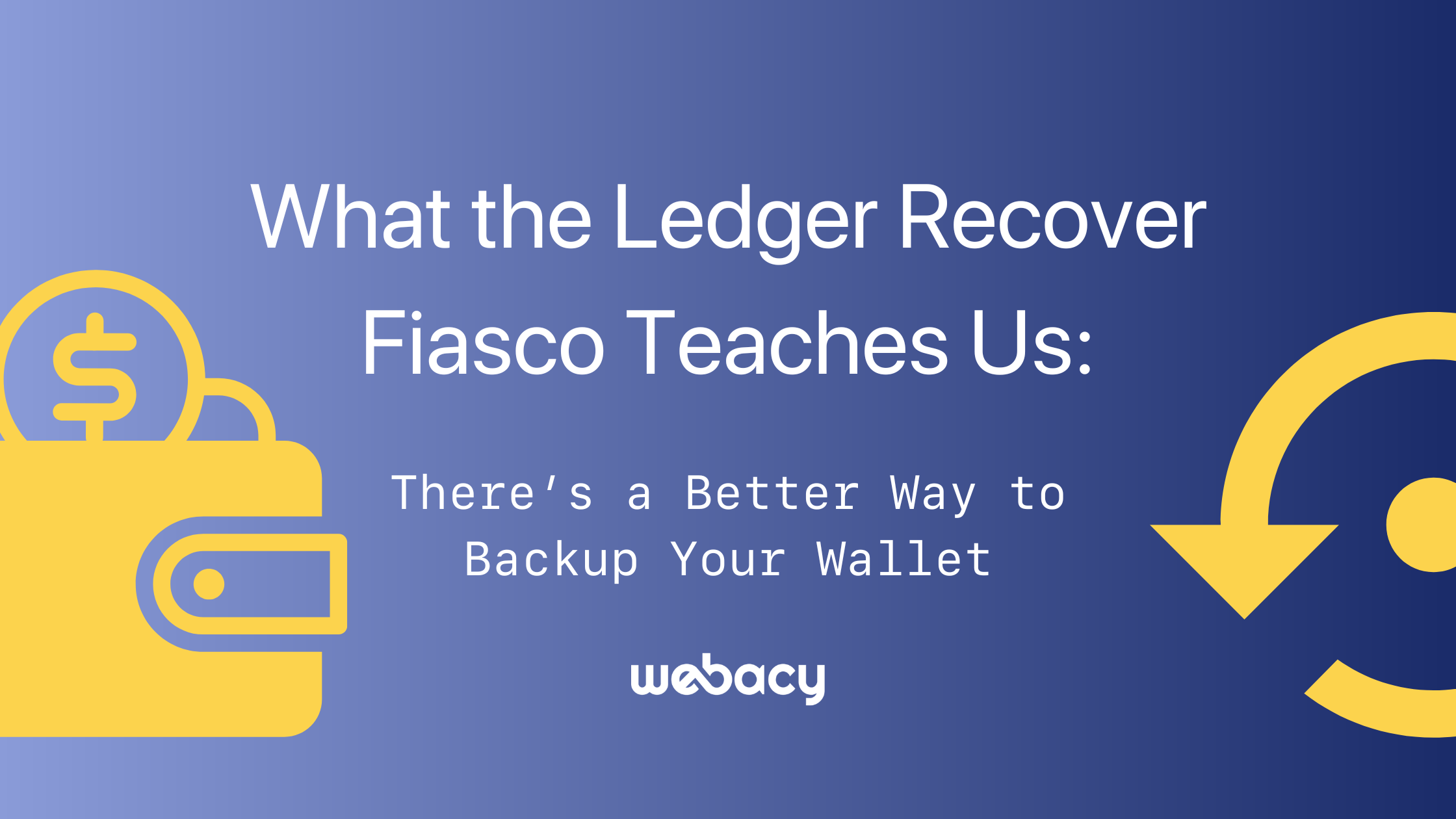What the Ledger Recover Fiasco Teaches Us: There’s a Better Way to Backup Your Wallet

Recently, the popular Paris-based hardware wallet company Ledger announced the launch of Ledger Recover — a new custodial service offering key recovery features.
In the company’s own words, Ledger Recover “allows you to enjoy all the benefits of self-custody when it comes to interacting with web3, allowing complete control over your assets on the go.”
However, the new service was immediately met with harsh criticism.
Crypto enthusiasts were quick to notice several fine-print details that raised red flags. For example, the product was designed only for the Ledger Nano X product. There was also an admission from leadership that the government could gain access to users’ crypto in scenarios when a subpoena is ordered, mainly because portions of your keys/phrases would be available intact but in different digital locations. The spirit of the initiative was positive, but unfortunately, the crypto community’s reaction was overwhelmingly not.
One of the biggest draws for crypto enthusiasts is the ability to manage your crypto-based finances outside of the control of government agencies and financial institutions, primarily because of the promise of decentralization and access being local vs. centralized. This feature and initiative was perceived to be against that philosophy.
Additionally, many view the Ledger Recover service as another step in the direction of a more centralized crypto industry — something many crypto enthusiasts are vehemently against.
This begs the question of whether “not your keys, not your crypto” is still the reality, or whether it’s time for the larger blockchain space to adapt to new methods of digital asset management.
Are Private Keys Still the Best Way to Secure Your Crypto?
There’s no denying that private keys have both advantages and disadvantages.
On one hand, a private key ensures that only the owner of a wallet can access that wallet. This can alleviate many fears around both government interference and digital risks like cybercrime and fraud. It also gives ultimate control and ownership of the assets to its true owner.
Yet, on the other hand, managing private keys is no small task and can quickly spell disaster if a wallet owner does not know how to properly manage, store, and secure their keys.
As a result, we are seeing more and more companies devising their own custodian solutions for key management, with the Ledger Recover service being the latest development – which was in fact co-developed in partnership with a third party named Coincover.
The reality of the crypto space is that as more people are investing in and utilizing crypto, traditional means for securing private keys via seed phrases are growing outdated. Custodian-based solutions are often easier for newcomers to understand how to use, making these types of services a growing preference among the newer sect of crypto enthusiasts. Other hybrid security solutions including account abstraction and MPC wallets are creating alternatives.
However, non-custodial alternatives do exist (like the recovery and backup feature that Webacy offers) that simplify wallet security without sacrificing self-custody. These non-custodial solutions represent the most effective path forward for crypto and wallet security, as they empower individuals to better manage assets independently, rather than handing off the responsibility to a custodian entirely.
Webacy Offers a Vital Alternative to Key Sharing
At Webacy, we strive to provide a non-custodial solution for backing up your wallet – including if you’ve lost access. Webacy also has an entire suite of tools to help with wallet monitoring and risk assessment as well, but this section will focus on wallet and asset recovery.
The Webacy Backup Wallet enables users to connect their own wallet without sharing private keys or seed phrases. The Backup Wallet is a feature of Webacy’s broader Wallet Watch service and product, which provides users with several key features:
- Backup Wallet via self-approval: The Backup Wallet feature allows users to easily integrate with a self-custody management system, including browser wallets, hardware wallets, software wallets, and vaults. This integration eliminates the need for key sharing, ensuring users retain full control over their wallets and assets by allowing the user to designate and approve assets to their own backup wallet, like a cold wallet (or any wallet for that matter) – that will allow you to “backup” specific assets without moving them out of the original wallet until necessary. This is done through smart contracts, where you effectively write your own protection smart contract when creating your backup plan with Webacy.
Managing a crypto wallet all on your own can be quite the task — and it can often include vital technical challenges that can be hard to overcome without a background in blockchain development.
Webacy’s ultimate goal is to empower the crypto community to imbue their approach to self-custody with better security and safety practices. While we believe self-custody is one of the key advantages of holding crypto-based assets, we also recognize the challenges self-custody presents. Our products and services are designed to provide you with the resources and support necessary to optimize your self-custody strategy. Learn more about Webacy and get started with Wallet Watch for free today.